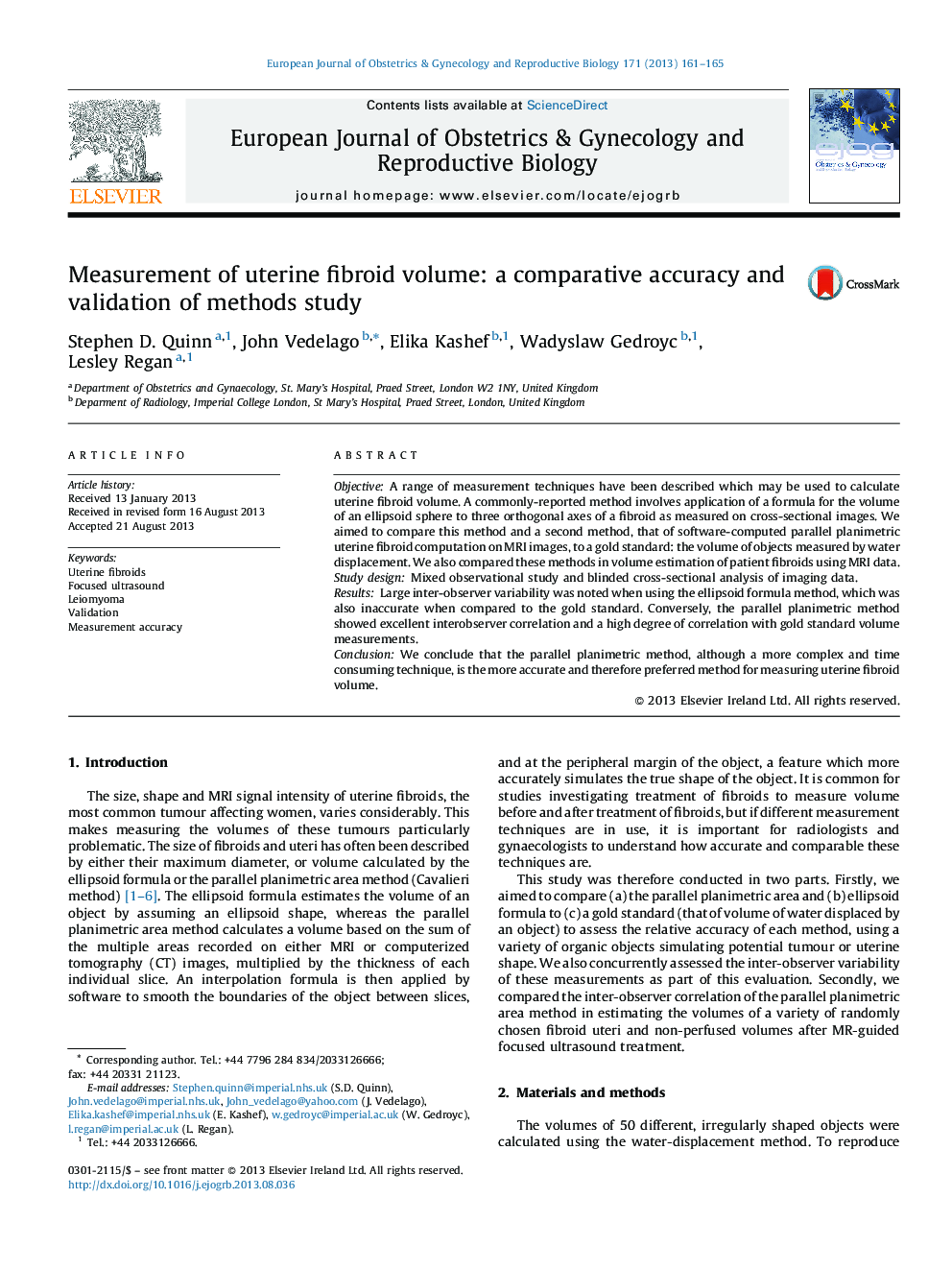| Article ID | Journal | Published Year | Pages | File Type |
|---|---|---|---|---|
| 3919853 | European Journal of Obstetrics & Gynecology and Reproductive Biology | 2013 | 5 Pages |
ObjectiveA range of measurement techniques have been described which may be used to calculate uterine fibroid volume. A commonly-reported method involves application of a formula for the volume of an ellipsoid sphere to three orthogonal axes of a fibroid as measured on cross-sectional images. We aimed to compare this method and a second method, that of software-computed parallel planimetric uterine fibroid computation on MRI images, to a gold standard: the volume of objects measured by water displacement. We also compared these methods in volume estimation of patient fibroids using MRI data.Study designMixed observational study and blinded cross-sectional analysis of imaging data.ResultsLarge inter-observer variability was noted when using the ellipsoid formula method, which was also inaccurate when compared to the gold standard. Conversely, the parallel planimetric method showed excellent interobserver correlation and a high degree of correlation with gold standard volume measurements.ConclusionWe conclude that the parallel planimetric method, although a more complex and time consuming technique, is the more accurate and therefore preferred method for measuring uterine fibroid volume.
